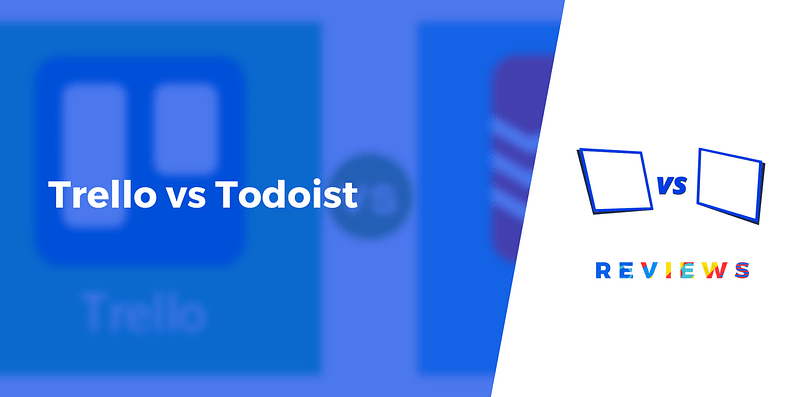


I store all daily recurring tasks in their own folder, to keep all tasks with a repeating due date in one place. We’re mostly testing it as an alternative to Trello, for now. Here we collaborate over our rare shared projects. Inside the Work folder, we’ve got Content team tasks to-do which is a shared list between myself and the other full-time blogger here, Benjamin Mulholland. You can’t see, but in the Home folder there are lists like Shopping and Daily Recurring Housekeeping. I have a Work and a Home folder to separate these areas of my life. The Today and Week lists are smart lists, which means they’re automatically generated by the due dates you’ve attached to tasks elsewhere. To give you an idea of how Wunderlist is better than a sheet of paper, I’m going to show you my current set up and how the different lists work.
#Trello vs todoist 2017 software#
It supports folders, recurring tasks and integrates with Trello, Slack, and 500 other apps through its integration with workflow automation software Zapier. Wunderlist is a feature-rich to-do list app available on every platform under the sun.
#Trello vs todoist 2017 free#
Wunderlist - Capable and integrated with a generous free plan, but slightly awkward UX
#Trello vs todoist 2017 plus#
This way, I can take the cards off of my shared Trello boards (great for collaboration) and prioritize them in Todoist (great for action).Īnother thing I’ve found is a plus point for Todoist is its gamification aspect: completing tasks gives you karma and lets you level up, and completing tasks repeatedly gives you a streak - and subsequently more karma. Here’s an example of an integration I use: Thankfully, Todoist integrates with both Zapier and IFTTT, so you can set up complex workflows on desktop using Zapier, or quick ones on mobile using IFTTT. Well played.Īs I’ll talk more on later, the huge thing I need from a to-do list app is integration capability. So, even though the free version of Todoist lacks most of the useful features you’d find in Wunderlist, it has such a beautifully simple UI that it starts feeling clunky to use anything else. Just the same way you can snooze emails in Gmail, you can quickly date or re-schedule an item by swiping left and then tapping one of the options. Perhaps it’s my inaccurate thumbs, but hitting the right places on the Wunderlist UI is sometimes real tricky. Using my expectations from other mobile apps, I figured that this would be the case when I didn’t see any checkboxes. If you’re a fan of Inbox by Gmail, you’ll love how easy it is to sn ooze and complete tasks with the mobile app. While its free version is missing plenty of features (reminders, search, emailing tasks, and more), you can probably spare $28.99/year if you want a to-do list app with extremely smooth UX.

Todoist is one of the big players in the to-do list world, and for very good reason. Ready? Fight! Todoist - Fully featured to-do list app with amazing UX but restrictive free plan Ready to go? It’s time for… The To-Do List Showdown Any.Do.īonus: Click Below to Get 13 Checklist Apps - Comparedīefore we get into the full-blown showdown, if you’re looking for a little more choice you should check out the bonus content I put together as a companion to this post - 13 checklist apps you have to try! With this in mind, I’m going to look at three options I’ve tested against each other over the past few months and report on what I’ve learned, both from the perspective of the features and from the perspective of the psychology of productivity. Your productivity really depends on the environment you manage your tasks in and the way your tasks are presented to you. I’ve had something of a battle with to-do list apps recently which has shown me that it’s as much about the app as it is about the way you interact with it.


 0 kommentar(er)
0 kommentar(er)
